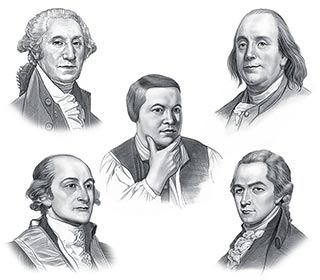There was a strong tendency, especially amongst those in the Southern Colonies to emulate British society. In Colonial Society your social life and contacts would all be with people from a similar social class. Colonial Women Colonial Society - Social Classes
Colonial Society was determined by social classes and much like a pyramid shape. The top consisted of just a tiny number of people who were the most powerful and wealthy people in the colonies. The lower down the pyramid, the more number of people there were and the lower their status. Just as Europe there were several social classes in the colonies of 18th century North America as depicted in the following chart - also refer to Colonial Work and Colonial Trades: - Upper Classes: These men were the elite, wealthy, well bred and well educated minor aristocrats. Men of the Upper class could vote and held high public office
- Middle Classes: Men of the middle class could vote but few held public office. These men owned small farms, ran stores or small businesses, were skilled tradesmen or belonged to professions such as ministers, doctors and lawyers
- Lower Classes & 'Poor Whites': Men of the lower class could not vote, none held public office, few owned property and most were illiterate. These were manual workers, servants, apprentices, sailors and hired hands but also included semi-skilled tradesmen. "Poor whites" were increasingly forced to become tenant farmers
- Indentured Servants & Convicts. Indentured Servants: Indentured servants (who included about 50,000 convicts) were were not paid any wages for up to 7 years. Indentured servants had few rights, they could not vote, they were not allowed to marry or to leave their houses and travel without permission and were not allowed to buy or sell anything
- Slaves: 20% of population of North America were slaves and had no rights
|
